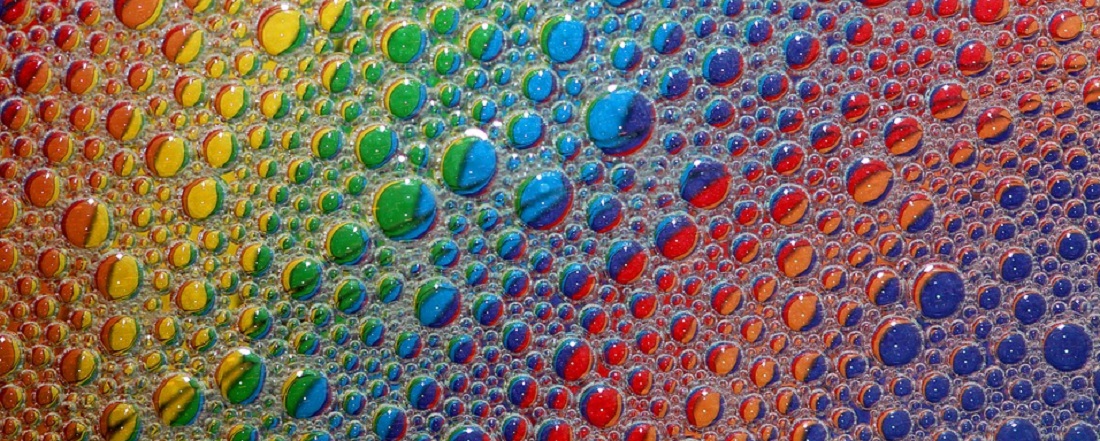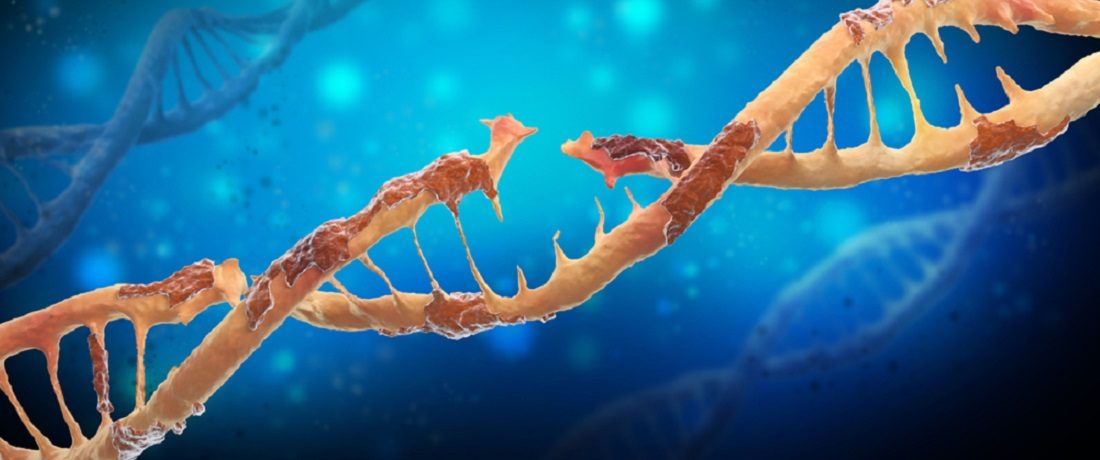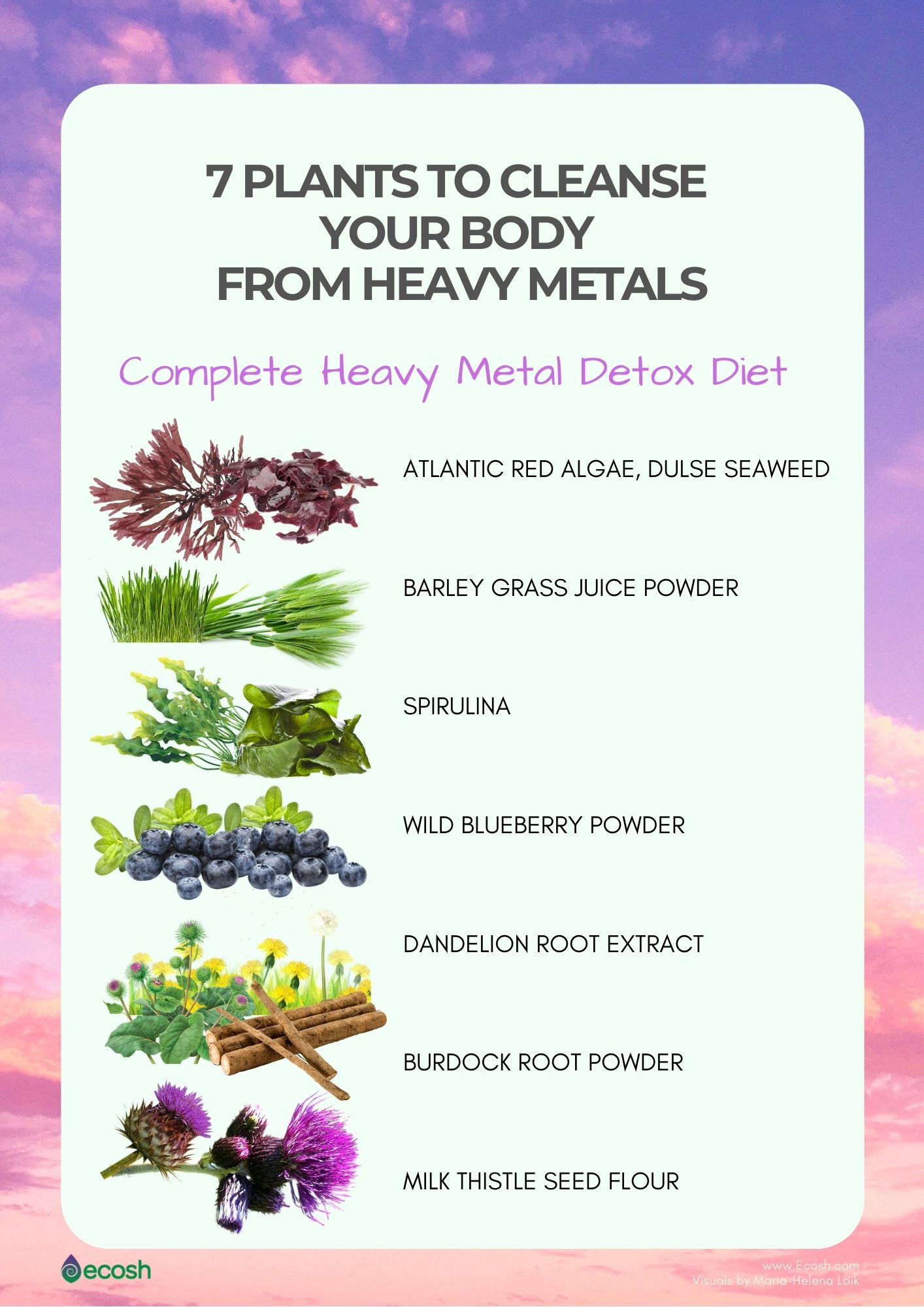Why is it necessary to talk about heavy metals? Because we have never been in contact with so many toxic substances as nowadays. These include heavy metals and other poisons, such as:
- Mercury
- Aluminium
- Arsenic
- Copper
- Lead
- Nickel
- Cadmium
- Air pollution
- Medications
- Nanotechnological chemicals sprayed on almost every product
- Pesticides
- Herbicides and fungicides
- Plastics
- Industrial cleaning products
- Petrol
- Dioxins in the oceans and thousands of new chemicals that enter the environment each year. These poisons also fall from the sky.
Toxins pose a lot of dangers. They poison the body directly, damage the brain, liver, central nervous system, and other vital areas. They weaken the immune system, making it vulnerable to illnesses.
And what’s worse, they feed cancer, viruses, bacteria and other intruders, which in turn contribute to disease development. It is precisely the toxins that may trigger today’s serious diseases such as cancer, Alzheimer’s disease, and other epidemics.

Most Encountered Heavy Metals, Their Sources, and The Diseases They Cause
Mercury
Mercury usages:
- Electrical appliances
- Batteries
- Lamps
- Thermometers
- In some laxatives
- Printer inks
- Solvents and paints
- Cosmetic products
- Detergents
- Plastics
- One of the many ways we can get mercury is through seafood, large predatory fish are especially contaminated with mercury. You can reduce the risk by eating smaller fish, such as sardines and mackerel.
- For children, vaccines may also be a source of mercury.
- In the past, it was also used in pesticides, fungicides, antiseptics, bleaching creams, as well as in stomatology in silver fillings, or dental amalgams.
- Mercury has been passed from one generation to the next for centuries. It is almost certain that your great-great-great-grandparents tasted mercury elixirs when they were considered a source of youth. Mercury elixirs were famous throughout England, the rest of Europe, and other countries.
- In the past, also hat makers used mercury solutions to accelerate felting. On average, a hat maker lived for 3 to 5 years after they started working in the factory.
Although many mercury-containing substances or devices are prohibited, they are still used.
Mercury is poisonous already in the tiniest amounts, which are impossible to see. Industries release mercury to water bodies. Mercury-containing drugs emerged in the 20th century.
From the point of view of toxicity, the form that mercury is present in is of crucial importance. Industries use inorganic mercury and often mercury residues are released into water bodies with wastewater. Microbes living in the mud at the bottom of water bodies turn inorganic mercury into considerably more harmful methylmercury.
Methylmercury reaches the food chain of the body of water and builds up in the predatory fish at the top of the food chain. Unlike inorganic mercury, methylmercury mainly damages the cerebral cortex.
Mercury damage is widespread. The most serious consequences are:
- Limb paralysis
- Mobility difficulties
- Dysaesthesia
- Decrease in hearing
- Mental disorders
- Dental amalgams constantly release a small amount of mercury, which mixes with digestive enzymes and food when chewing, and then migrates to the gastrointestinal tract. In the gut, mercury reacts with hydrochloric acid and produces mercuric chloride, which may damage the inside of the stomach and intestines and can cause ulcers.
- If mercury compounds get in contact with the good bacteria living in our gut, they will be destroyed immediately. This causes a disturbance in the balance of the intestinal microflora, which in turn causes a wide range of different symptoms and conditions, most commonly yeast growth and the resulting problems.
- After exposure to mercury vapor, the mercury content of the central nervous system is ten times higher compared to the oral administration of the same amount. In the central nervous system, mercury is distributed unevenly, accumulating in the cerebellum and the medulla oblongata region. Symptoms vary from mild personality disorders to dementia. A developing central nervous system is usually more sensitive to the effects, so pregnant women should not eat any fish containing mercury.
- Mercury causes muscle and joint problems. As mercury concentrates in adipose tissue and accumulates over a long period of time, it should not be surprising that it can cause severe symptoms such as muscle and joint pain and muscle stiffness and swelling. In the musculoskeletal system, muscle soreness, rapid tiring, muscle stiffness, convulsions, and other problems are signs of mercury intoxication.
NB! Often, the initial cause of arthritis, fibromyalgia, chronic fatigue syndrome, and multiple sclerosis may be, in one way caused by an accumulation of excess mercury.
- Mercury is the best fuel for cancer, viruses, and bacteria. Exposure to mercury causes inflammation and takes people hostage with a huge number of symptoms and diseases such as: depression, anxiety, hyperactivity and attention deficit disorder, autism, bipolar disorder, neurological disorders, epilepsy, pruritus, numbness, twitching, spasms, hot flashes, palpitations, hair loss, memory loss, confusion, insomnia, libido loss, fatigue, migraines, and thyroid disorders.
- Mercury is lipophilic, which means it concentrates in fatty tissues, including in the brain. Therefore, any mercury toxicity negatively affects brain function. Unfortunately, the most vulnerable to the effects of mercury are foetuses, infants, and young children. The ever more packed vaccination calendar and, consequently, increasing exposure to mercury compounds may be one explanation for the explosive increase in brain-function-related problems, such as the spread of autism spectrum disorder.
- Mercury affects the brain and the nervous system. Mercury-related brain damage can be expressed, for example, in late infant developmental milestones, such as walking and talking, poor memory and attention, and it also affects linguistic skills, fine motor skills and hand-eye coordination of young children and the elderly.
NB! Mercury does not exit the body unless you take special steps to remove it. We can make simple detoxification programs our daily routines to protect ourselves. Mercury leaves slowly, its half-life is about a year.
Often, bad memory and attention are also called:
- Dementia
- Autism
- Attention and behavioural disorders
- Parkinson’s disease
- Alzheimer’s disease
- Depression
- Migraine and other problems
Although many other factors can cause these health problems, mercury poisoning should not be ruled out as one of the reasons. Alzheimer’s disease is said to be caused 100% by mercury.
Aluminium
Aluminum is not chemically considered a heavy metal because it has a lower density. However, due to its effect on the body, it is treated in the same category with heavy metals.
Aluminum, for example, is ingested from:
- Several medicines, including gastric acid neutralizing antacids
- Cutlery made of aluminum (if they are still in use)
- Aluminium foil
- Antiperspirant deodorants
- Baking powder
- Contaminated drinking water
- Food additives
- Car exhaust gases
- Tobacco smoke
- Fireworks
Aluminum mainly affects the central nervous system, the kidneys, and the digestive system. It also removes calcium from the bones and exacerbates calcium and phosphorus absorption. Aluminium has been associated a lot with cognitive problems and with illnesses that are more common in older people, such as Alzheimer’s disease and dementia.
In younger people, it can lead to learning disabilities, osteoporosis, ringing in the ears, digestive problems, colic in infants, hyperactivity in children, balance problems, memory problems, degenerative muscle diseases, and cancers.
Arsenic
Arsenic is commonly used in:
- The production and use of pesticides and wood preservatives, since arsenic is highly toxic to insects, bacteria, and fungi
- For the same reason, arsenic was also added to paint in the past
- Arsenic is also used as a food supplement in cattle and pig farms, and only recently arsenic content in chicken meat was banned in the United States.
- Metallic arsenic is used to strengthen lead in alloys.
- Arsenic enters the body through food (fish and seafood) and beverages, and inhaled arsenic is also dangerous.
- This heavy metal is also commonly encountered by people who work in the metal industry, glass production, or preserve wood. Arsenic accumulates in nails and hair and thus these can be used as biomarkers.
Arsenic mainly causes damage to the digestive and central nervous system, but is also harmful to the kidneys, liver, lungs, and bladder. It can cause sore throat, anorexia, fever, mucosal irritation, cardiac arrhythmias, numbness in the limbs, birth defects, and diabetes.
Symptoms of poisoning are like those of cholera: abdominal pain, vomiting, speech abnormalities, muscle spasms, confusion, coma. Untreated poisoning often ends with death. Chronic arsenic toxicity increases the risk of lung, kidney, and skin cancer.
Cadmium
Cadmium is present in nature in ores with zinc, to a lesser extent with lead or copper.
It comes from the:
- Combustion of fossil fuels, phosphorus fertilizers, iron and steel, as well as cement production, and from natural sources.
- Cadmium gets into the body primarily by being absorbed through the gastrointestinal tract or the respiratory tract.
- Cadmium may be present in soluble coffee and tea, drinking water, some soft drinks, refined grains, fungicides, pesticides, and plastics.
- It surely leaks to the environment from batteries and cigarette smoke.
- The most dangerous is the inhalation of cadmium-containing dust or vapours. Smokers inhale 10% of the cadmium into the lungs. Up to 50% of cadmium inhaled from cigarettes absorbs into the lungs. Smokers have a cadmium level that is 4–5 times higher than non-smokers.
Cadmium affects the digestive system, liver, placenta, kidneys, lungs, central nervous system, bones, and reproductive organs.
In the liver it produces a compound with proteins that moves into the kidneys and damages the filtration process that results in the body losing necessary proteins and nutrients.
Longer-term exposure to cadmium can lead to osteoporosis, since calcium in the bones will be replaced with cadmium. Already a small amount of cadmium increases the risk of osteoporosis. Severe cadmium poisoning may trigger the Itai-Itai disease (3).
Cadmium is also carcinogenic – it can produce lung, prostate, or kidney cancer. For instance, you can suspect cadmium presence in your body if you have constant fatigue, irritability, headaches, high blood pressure, prostate enlargement, hair loss, learning disabilities, liver and skin problems, joint pain, decreased immunity, and lung damage. Removing cadmium from the body is very difficult.
Lead
Lead originates primarily from:
- Car exhaust, dust, and industrial gases. As more and more unleaded petrol is used, lead emissions have declined in developed countries.
- In addition, lead comes from mines and metal industry and is found in paints.
- It enters the body both through air and food.
Already a small amount of lead is very dangerous to humans. Since lead does not decompose in nature, it can persist for a long time when it is in contact with the ground. Lead is also harmful to biological systems. Lead accumulates in the upper layer of the soil and is immobile. If this continues to occur, the normal soil system will not be restored. Lead does not dissolve in water and causes severe damage to organisms.
Lead damages bones, brain, kidneys, thyroid, liver, and the central nervous system. Poisoning caused by chronic exposure to lead can start from mild mental changes and lead to death. What is important is how long and how quickly the person comes in contact with heavy metals and the age of the person.
Mild lead poisoning causes fatigue, difficulty with concentrating, memory weakness, sleep disorders, irritability, bone growth disorders, learning difficulties, increased blood pressure, weight loss, receptivity to infections, headaches, digestion problems and many other problems.
Symptoms of acute poisoning include drowsiness, seizures, confusion, and increased intracranial pressure that leads to unconsciousness and death. Damage may also be permanent. If the lead content is over 3 μmol/l, it will damage the central nervous system. Lead can cause cancer in humans. Babies, pregnant women, and foetuses are the most susceptible to lead poisoning. Children absorb lead through the gastrointestinal tract. Consequences may include brain damage, behavioural, concentration or learning disabilities.
How Does The Body Excrete Toxins or Store Them in The Event of Overload?
Lymph absorbs and releases the contaminants present and stored in the body. Liver absorbs contaminants from the blood and decomposes them into simpler, safe products that are removed from the body with bile. Thyroid and adrenal glands also contribute to the cleansing process.
If the pollution builds up too much, the organism will no longer be able to remove all of it by itself, and it initiates protective mechanisms and begins to deposit them as dissolved salts, first in the walls of the intestines, in the skin, in the existing or forming fat layer, later in the liver, kidneys, reproductive organs, and lastly in the muscles, tendons, and bones.
Stones begin to form in the organs and cavities, the functioning of the blood circulation, the immune system and the body’s other systems becomes disturbed, recovery and self-healing processes stop proceeding normally, aging processes are accelerated, and spontaneous poisoning may occur.
For example, the contamination of the intestinal walls, which can often be measured in kilos, causes the manifestation of diseases such as tonsillitis, rhinitis, sinusitis, herpes, asthma, migraine, neurasthenia, furunculosis, rashes, not to mention intestinal infections, digestive disorders (constipation and diarrhea), and dysbacteriosis.
In addition to the heavy metals, poisoning may also be caused by:
- Sedentary lifestyle
- Low consumption of clean water
- Use of refined foods
- Low consumption of vegetables, greens, and fruits
- Emotional overload and constant stress

How To Get Rid of Heavy Metals?
Removing heavy metals is difficult, but extremely important. It often takes a very long time to excrete them from the body efficiently and safely.
There are several foods and supplements that help to detoxify, for example:
- Different seaweeds – spirulina, red dulse
- Coriander. Fresh coriander is so effective as a heavy metal binder that it can overload the liver in large quantities. However, in moderate amounts, it is a great help.
- Parsley
- Sulfur-rich garlic and onion. Garlic was successfully used in the 1970s for the treatment of children with lead poisoning, and it also helps remove all other heavy metals from the body.
- Green tea
- Lucerne
- Foods high in fiber
- Dandelion root
- Echinacea purpurea
- Liquorice root
- Vitamin E and Vitamin A
- Selenium
- Zinc
- Indispensable amino acids and many others
- Heavy metal detox
- Also, probiotics in pickled foods also contribute to the binding of heavy metals and restore the intestinal microflora damaged by heavy metals.
- Green leafy vegetables are good for detoxifying from all types of poisons, but in winter, when they are scarcer in food, you can support your diet with chlorella and spirulina supplements.
To begin with, you should find a dentist specialising in the safe removal of amalgams. After that, it is good to consult with a holistic medicine specialist or nutrition therapist who understands the importance of proper nutrition, nutritional supplements, and cleansing of the digestive system and the liver/kidneys to effectively remove heavy metals from the body.
It is very important to consume pure water, to sweat (in a sauna or infrared sauna) and then to wash yourself thoroughly, and to eat healthy and clean food.
As the accumulation of heavy metals is a slow and unobtrusive process, it is more worthwhile to deal with prevention and continuous detoxification than to wait until more serious health problems arise.
Detoxifying From Heavy Metals
It is impossible to avoid everything harmful in this world, but there are things we can do for ourselves.
One of the best ways to detoxify from heavy metals is to consume the following 7 foods every day:
1. Barley grass juice extract powder: Removes heavy metals from the spleen, intestine, pancreas, and reproductive system. Barley grass powder prepares mercury for complete absorption by spirulina. Take 1–2 teaspoons mixed with water or juice.
2. Spirulina: (preferably from Hawaii): Pulls heavy metals out of the brain, central nervous system, and liver and absorbs heavy metals extracted by barley grass powder.
Take 2 teaspoons mixed with water, coconut water, or juice.
3. Forest blueberries: Pull heavy metals out of the brain. It also heals and improves all the voids from which heavy metals have been removed, which is particularly important for the brain. This is the most powerful food for the reversal of Alzheimer’s disease. Eat at least a cup a day.
4. Red dulse (Palmaria palmata): Binds mercury, lead, aluminum, copper, cadmium, and nickel, passes through the blood-brain barrier. Unlike other algae, it can remove mercury independently. It enters the depths of the body, hidden places, looking for mercury, binding it, and not releasing it before it leaves the body.
Eat two tablespoons of flakes daily, or the same amount of strips, if it is in the form of sheets.
5. Dandelion: This plant triggers blood circulation and helps your body to purify from toxic heavy metals, DDT, radiation and other toxins. Dandelion root detoxifies especially organs like the spleen, liver and brain.
6. Burdock root: Burdock root has the ability to purify toxins from the deepest places of the liver, soften dense and stagnant liver, remove toxic hormones from the liver that have been ingested from external sources such as metals, plastics, herbicides and fungicides.
7. Milk Thistle: Milk Thistle is a powerful plant that supports your liver during purification. In addition, it enhances liver resistance, strengthens bile formation and secretion, and has a good effect on the gastrointestinal tract. This plant effectively contributes liver regeneration and promotes liver innervation.
For optimal effects, it would be good to consume all five foods or supplements within 24 hours. You can also add coriander to your diet. It enters deep into hard-to-reach places, extracting heavy metals deposited a long time ago. Mix one cup into a smoothie or juice or add to salads.
If you can’t take it all, try to eat two or three a day. All these five powerful nutrients that remove heavy metals leave essential nutrients to the body to heal the damage caused by heavy metals and to restore the body. In addition, read more about Complete Heavy Metal Detox Diet and 7 Plants to Cleanse Your Body From Heavy Metals.
If you want even more success, add burdock root. Consume over a longer period. There’s almost nothing better you can do for your health than to remove heavy metals from your body. However, do not start to self medicate and first consult your doctor before starting any diets and self care practices.
Supporting Your Liver During The Detox
The liver is the largest of the digestive glands and the largest internal organ of the body with a weight of about 1.5 kg. The liver is the laboratory of the body, it transforms the harmful compounds into harmless ones and helps remove them from the body through excretory organs. Of all the organs involved in the removal of metabolic wastes, it is the liver that is responsible for making toxic substances unharmful. The liver is located in the right side of the abdomen, below the diaphragm.
A powerful support for the liver during detox is milk thistle.
Milk thistle and its benefits
Milk thistle is the “gift of Virgin Mary” according to folklore. This plant (Silybum marianum) is from the Mediterranean. Its height can reach up to 150 centimetres. Many people consider milk thistle to be the most effective medicinal plant. Milk thistle has no known contraindications or side effects.
- Milk thistle increases liver resistance, strengthens the formation and excretion of the bile and is good for the gastrointestinal tract.
- This plant effectively promotes liver recovery and promotes liver innervation. Innervation is the supply of any organ or tissue with nerve impulses through nerve cells and nerve fibers, ensuring their connection to the central nervous system.
- In addition, milk thistle helps to heal the liver in the case of jaundice and damage caused by medicines or poisons (including radiation-induced damage).
- Some use it for spleen and thyroid diseases, salt deposition, varicose veins, edema, dropsy, hemorrhoids, obesity, radiculitis, joint pain, and allergic phenomena. It may also help with a variety of skin diseases.
- Milk thistle has a good effect on liver inflammation caused by: viral hepatitis (liver inflammation – e.g., Epstein-Barr virus, one viral form of hepatitis C); excessive use of alcohol, and liver cirrhosis caused by excessive binge eating
NB! The seeds and herbs of milk thistle can reduce the effectiveness of oral contraceptives and tamoxifen. However, do not start to self medicate and first consult your doctor before starting any self care practices.
Folk recipes for Milk thistle
- Milk thistle root extract. To prepare the root extract use 1 tablespoon of raw root for 1 glass of boiling water. Heat the raw material in a closed enamelled container in a water bath for 30 minutes. Then drain it 2–3 times through a cheesecloth whilst it is hot. Then wring out the cheesecloth and add boiling water to reach the original volume. Take 1 tablespoonful 3 times a day before eating. It is used for toothache (mouth rinsing), diarrhea, urine retention, radiculitis, and seizures.
- Milk thistle leaf juice. Folk people use it to treat constipation, inflammation of the colon and inflammation of the stomach mucosa.
- Milk thistle seed extract. Flour made of the seeds reduces blood sugar level, purifies blood, helps to treat varicose veins. To make the seed extract, pour 0.5 litres of hot water on 30 grams of seed powder and heat in a water bath until the amount of water reduces by half, then drain through a cheesecloth. Take 1 tablespoonful an hour before eating. The length of a treatment course is 1–2 months.
NB! The information provided here is for informational purposes only, so do not consider it as health care or medical diagnosis and treatment. Do not consider this information as a guarantee of the results you want to achieve. In addition, this information does not replace the advice of your physician or other healthcare professional.
Even more, you should not use it to diagnose or treat a health problem. Before changing or discontinuing your existing medication, treatment, or care, or taking any dietary supplements, be sure to consult with your healthcare professional or doctor before starting any diet or program, or if you suspect you may have a medical condition.
Pictures: Pexels.com, Pixabay.com
Sources:
- Williams Medical Medium.
- Mihkelsoo, L., Mihkelsoo, V. Step-by-Step Self-Healing Guide.
- https://www.nature.com/articles/modpathol201362#:~:text=Itai%2Ditai%20disease%20is%20the,a%20zinc%20mine%20located%20upstream.










